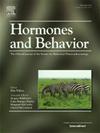种族歧视任务对少数种族群体唾液皮质醇反应的影响:一项荟萃分析
IF 2.5
3区 医学
Q2 BEHAVIORAL SCIENCES
引用次数: 0
摘要
种族歧视可以具体定义为基于种族身份对个人或群体的差别待遇。越来越多的人认为,种族歧视的经历是一种社会压力源,会引起生理反应,并增加一生中健康状况不佳的风险。然而,最近试图综合有关种族歧视和皮质醇输出的文献,产生了复杂的结果。这可能是由于纳入了广泛的研究设计(例如,横断面,实验),皮质醇活性测量和种族歧视测量。本研究的主要目的是应用一个狭窄的视角来综合种族歧视和皮质醇输出的文献。具体来说,通过研究急性种族歧视和唾液皮质醇反应之间的关系,我们旨在在研究领域内展示一个明确的模式。结果使用5项研究(由7个独特的数据集组成;N = 650),我们使用CMA软件进行随机效应模型。结果表明,种族歧视应激源与急性皮质醇水平升高相关(均值标准差= 0.189,95% CI[0.083, 0.295])。结论:本荟萃分析以狭窄的视角看待文献,为急性种族主义经历与唾液皮质醇反应之间的关系提供了支持。研究结果还表明明确需要进行未来的研究,并突出了方法决定对综合工作的影响。本文章由计算机程序翻译,如有差异,请以英文原文为准。
Effects of racial discrimination tasks on salivary cortisol reactivity among racially minoritized groups: A meta-analysis
Rationale
Racial discrimination can be specifically defined as the differential treatment of an individual or group based on their racial identity. Increasingly, the experience of racial discrimination is characterized as a social stressor that elicits physiological responses and increases the risk of poor health over the lifespan. However, recent attempts at synthesizing the literature surrounding racial discrimination and cortisol output, specifically, have produced mixed results. This is likely due to the inclusion of broad research designs (e.g., cross-sectional, experimental), measures of cortisol activity, and measures of racial discrimination.
Objectives
The primary goal of the current study was to apply a narrow lens to the synthesis of the racial discrimination and cortisol output literature. Specifically, by examining the association between acute racial discrimination and salivary cortisol reactivity, we aimed to demonstrate a clear pattern within the research area.
Results
Using five studies (composed of seven unique datasets; N = 650), we conducted a random effects model using the CMA software. Results indicate that racial discrimination stressors are associated with elevated acute cortisol levels (standard difference in means = 0.189, 95 % CI [0.083, 0.295]).
Conclusion
By approaching the literature with a narrow lens, this meta-analysis provides support for the association between acute experiences of racism and salivary cortisol reactivity. Findings also demonstrate a clear need for future research and highlight the influence of methodological decisions on synthesis efforts.
求助全文
通过发布文献求助,成功后即可免费获取论文全文。
去求助
来源期刊

Hormones and Behavior
医学-行为科学
CiteScore
6.70
自引率
8.60%
发文量
139
审稿时长
91 days
期刊介绍:
Hormones and Behavior publishes original research articles, reviews and special issues concerning hormone-brain-behavior relationships, broadly defined. The journal''s scope ranges from laboratory and field studies concerning neuroendocrine as well as endocrine mechanisms controlling the development or adult expression of behavior to studies concerning the environmental control and evolutionary significance of hormone-behavior relationships. The journal welcomes studies conducted on species ranging from invertebrates to mammals, including humans.
 求助内容:
求助内容: 应助结果提醒方式:
应助结果提醒方式:


